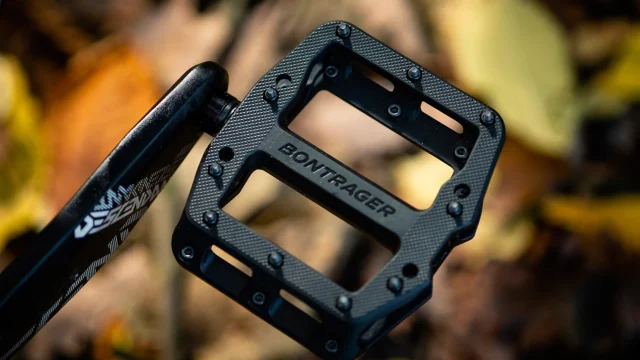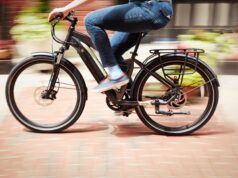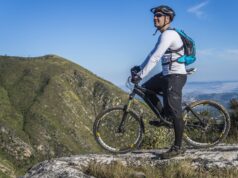It can’t be easy to find the best road bike pedals for your bike. You want a pedal that is reliable, comfortable, and suitable for both training and racing. However, every road cyclist needs a set of pedals that is suitable for their requirements, and here is a list of the best road pedals for your bike in terms of comfort, weight and ease of use.
Road cycling is a fast-growing trend among cyclists around the world, and it’s one of the most popular cycling styles. It’s the best way to train and improve your fitness, and it’s also a lot of fun! Road cycling is also popular among commuters, especially those who would like to avoid taking the bus, which is often crowded, dirty, and has a low capacity. Some people also like to pedal on roads where they can travel at a faster pace, such as the highway.
There are a great number of road cycling pedals on the market for most road cyclists. But not all of them are good, which makes it difficult to find the best pair. There are a number of factors to consider when buying road pedals. These include the size, weight, shape, and comfort. How to choose which road pedals to buy? This is not a problem, and there are some basic rules to follow to ensure that you get the best pair.. Read more about shimano pedals and let us know what you think.
Our professional testers have chosen the finest clipless road bike pedals on the market in 2023.
The greatest inexpensive road pedals, the finest all-rounders, and pedals for cyclists with particular needs can all be found here.
Because there are so many choices, deciding which road pedals to purchase may be difficult, but our buyer’s guide will teach you all you need to know and provide options for all budgets.
The saddle, bar, and pedals are the three points of contact between you and your bike that have the most work to accomplish.
They must not only hold your feet in position while they spin at speeds of up to and often exceeding 100rpm, but they must also offer a firm foundation against which you may drive yourself and your machine forward.
This is a long way of stating that selecting the finest road bike pedal for your riding needs is critical.
What is a clipless pedal, and how does it work?
The traditional pedal and toe-clip configuration that pretty much every road bike had until the late 1980s/early 1990s gave way to clipless (i.e. clip-in) pedals. Although you can ‘clip in’ to clipless pedals, the lack of a conventional toe-clip gives them their moniker.
While toe-clips utilize a clip and strap to keep the foot on the pedal, clipless pedals use a cleat that is attached to the shoe’s sole and mechanically engages with the pedal, similar to a ski binding.
To clip onto pedals, place your foot on the face of the pedal and press forward or downward to contact the cleat. Simply twist your foot outwards to release it.
Despite the fact that most clipless pedals utilize the same technology, there are many differences in design, manufacture, and pricing.
Many individuals soon realize the benefits of clipless pedals, however there are times when a flat pedal is better appropriate for your riding.
Below is our list of the best road pedals presently on the market, as well as a quick explanation to what to look for when selecting clipless pedals.
This is a selection of our favorite road pedals among the ones we’ve tested, but there are many more to choose from – check out our pedal reviews area for more information.
Check out the Keo Classic 3 Plus pedal.
The Look Keo Classic 3 Plus is an excellent first pedal. Immediate Media / David Caudery
- As tested, £59 / $75 / AU$102
- Simple to use and dependable
- Plates made of stainless steel for a solid pedaling experience
- Weight for the money is reasonable.
The Look Keo Classic 3 Plus pedals are an excellent first clipless pedal for cyclists or anybody seeking for a low-cost, high-tech pedal.
The pedals feature a 60mm broad body that provides a solid and secure pedaling experience, while the stainless steel plates provide some much-needed toughness.
Thanks to Look’s iconic clipless pedal design, clipping in and out of the pedals is a breeze. This is made easier by the pedal constantly hanging at the same angle on the crank, ensuring that you obtain the proper angle while clipping in.
The pedals feel solid even while climbing 20% slopes or sprinting, and the amount of float offers enough of comfort.
Shimano M520 SPD Shimano M520 SPD Shimano M520 SPD Shimano
There’s nothing wrong with riding a road bike with MTB pedals. Immediate Media / Oliver Woodman
- As tested, £35 / $48 / AU$61
- Best commuting, gravel, cyclocross, and other filthy riding road bike pedals
- In muddy circumstances, this vehicle performed well.
- Low-cost, long-lasting, and completely serviceable
These are a fantastic option if you already own a pair of mountain bike shoes, enjoy the concept of double-sided entry (perfect for riding in traffic), anticipate riding in especially harsh circumstances, or prefer the walkability of normal SPD pedals.
The pedals may be left alone for years with no problems and will function much better than any ‘road-specific’ pedal when the going gets tough.
They’re completely serviceable, but many people regard them as throwaway since they’re extremely long-lasting, even if they’re never serviced, and inexpensive to replace when they die.
If the somewhat greater weight bothers you, you may always choose for the M540, XT, or XTR pedals, which are lighter and more attractive. The additional 40g above Shimano’s lowest road pedals, on the other hand, will probably go unnoticed by most riders.
The Shimano M520 SPD is now on sale.
Pedal Shimano 105 R7000
Shimano’s R7000 pedals are a 105 level product with an excellent weight-to-price ratio. Immediate Media / David Caudery
- As tested, £120 / $150 / AU$189
- dependable and consistent performance
- float that may be adjusted
- Power transmission is excellent.
Shimano’s 105 R7000 pedals achieve an excellent weight-to-price balance. As you’d expect from a Shimano product with the 105 moniker, they’re dependable and function well.
Because all Shimano SPD-SLs have the same body design, you receive a lot of the advantages of Shimano’s higher-tier Ultegra and Dura-Ace systems at this price point.
The wide-body with stainless steel metal inlays is one of these advantages. Together, they provide a highly stable and secure pedaling platform with great power transmission.
Shimano’s three-bolt cleat is used on the pedals. These pedals come with Shimano’s yellow cleats with 6 degrees of float, which are available in three variants with varying amounts of float.
An Allen key may be used to adjust the release tension, and the pedals dangle at a good angle for simple clipping in.
Pedal Time Xpresso 2
The Time Xpresso 2 pedals are a budget-friendly alternative using the company’s exclusive composite blade technology. Immediate Media / David Caudery
- As tested, £50 / $65
- Simple to use
- The platform is large and sturdy, with a smooth float.
- Lightweight
Time’s distinctive blade design is now available at a more reasonable price range with the Xpresso 2 pedals.
The lightweight design and simplicity of use of these pedals, which weigh 315g (with cleats), will appeal to a broad variety of riders, particularly as a first pair of clipless pedals.
The pedals are made of a composite body with a steel axle. The use of less expensive materials helps keep the price down, but the Xpresso 2s have the same technology as Time’s higher-end pedals, guaranteeing great functioning.
Shimano PD-5800 105 SPD-SL / PD-R7000 pedal
When it comes to value and reliability, 105 is the place to go. Immediate Media / BikeRadar
- As tested, £110 / $150 / AU$189
- The finest road bike pedals for all-around use
- Spring tension may be adjusted
- serviceable by users
With design elements taken from Shimano’s more costly Ultegra and Dura-Ace level pedals, the 105 provides a sweet spot in terms of quality versus price.
They aren’t the lightest, but they are simple to use, well-made, and serviceable. They, like many other Shimano components, are often discounted.
The superb R7000 105 pedals above have now replaced the PD-5800s we evaluated.
The Shimano 105 SPD-SL is now on sale.
Pedal Time XPro 10
The XPro is the next step in the Xpresso pedal line. Immediate Media / David Caudery
- £150 / $195 / $195 / $195 / $195 / $195 / $195 As of testing, $199.95
- The best road bike pedals for racers and weight lifters
- Exceptionally light (and expensive)
- The motion is quite smooth across the whole float range.
The XPro is a hollow steel axle version of Time’s Xpresso pedal.
The carbon flexion blade is at the heart of the XPro’s design, which, unlike pedals with steel springs, maintains the clip mechanism open until cleat entry snaps it close.
The XPros don’t always hang tail-down due to the lack of weight in the back, but they’re still simple to pick up, and the new cleats engage with greater confidence.
You could always opt for the much lighter and substantially more costly XPresso 15 if you really want to spend the dough. The XPro 15 has taken its place, although the pedal’s internals are substantially unchanged.
Look for the Keo 2 Max pedal.
The composite body is slimmer and has excellent lean angles. Immediate Media / David Caudery
- £114.99 / AU$79.99 $153.99 (as of testing)
- Outstanding pedaling stability
- Body made of composite materials
- Spring tension may be adjusted
These are Look’s Keos in the mid-range, and with this new iteration, they’ve improved even more.
The Keo’s lightweight composite body form is more in line with its more costly brothers, and it has a serrated center to aid shoe traction and entrance.
On large chromoly axles with a mix of loose balls and needle cartridge bearings, the pedals spin freely. They have adjustable spring tension and Look’s 4.5-degree float cleats.
These provide excellent performance with no hotspots, are simple to use, and are lightweight.
Check out the Keo 2 Max Carbon Pedal.
The Look Keo 2 Max is a mid-range pedal from the well-known pedal manufacturer. Immediate Media / David Caudery
- As tested, £95 / $125 / AU$187
- Mid-range pedal that is solid and dependable.
- It’s simple to use and has a lot of options for customization.
- Pedaling safely
The Look Keo 2 Max Carbon pedals are a mid-range model that brings the renowned pedal brand’s top technology to a more accessible price point.
In comparison to the Look Keo Classic 2 model, the pedal’s carbon body is covered with a stainless steel plate, which provides more surface area. The larger surface area is intended to enhance power transmission.
A chromoly steel axle rotates on needle and ball bearings on the inside. The pedals spin smoothly even under the greatest vigorous pedaling.
The engagement is a pleasant ‘click,’ and the connection is secure when riding. Disengaging is just as simple and audible as engaging.
By changing out the cleats, the float range (4.5 degrees) may be changed.
Pedal Shimano Tiagra R550
The Tiagra R550 pedals are a step up from Shimano’s entry-level pedals, but they feature the same design and performance as the company’s top-of-the-line pedals. Immediate Media / David Caudery
- As tested, £75 / $100 / AU$99
- Performance at the highest level
- float that may be adjusted
- Not the lightest of materials
The Tiagra R550 pedals are a step up from Shimano’s entry-level pedals, offering extremely excellent performance and durability for the price, with a design that mimics the company’s top-end pedals.
The Tiagra R550 pedals are an excellent first pair of clipless pedals, providing everything you need. They include Shimano’s three-bolt cleat system, adjustable float, and adjustable release tension, allowing you to make clipping in and out as simple or as difficult as you choose.
These pedals, like Shimano’s higher-end models, are broad with stainless steel metal inserts that provide ample of support while assisting power transmission.
The pedal’s composite construction means it isn’t as light as Shimano’s carbon options, but it is more robust and durable.
Shimano Ultegra R8000
A excellent fit-and-forget pedal that strikes a good middle ground between Dura-Ace and 105. Immediate Media / David Caudery
- As tested, £157 / $200 / AU$249
- Design that is light in weight
- Tension may be adjusted
- Floaty pedals with a great performance
When it comes to performance, the Shimano Ultegra R800 pedals strike all the right notes. The pedals, like their corresponding groupset, are less expensive than Dura-Ace while being lighter than 105.
The pedals have a sleek carbon composite shell and three non-replaceable stainless steel plates for longevity, smooth float, and power transmission.
These pedals come with Shimano’s signature yellow plastic cleats, which provide a generous 6 degrees of float.
Because the pedals hang nose up, it’s simple to clip into them. An adjustable spring controls the amount of effort needed to unclip the pedals, allowing them to be adjusted to fit various skill levels and talents.
The Ultegra R8000 pedals are expensive, and if performance is more important than weight reductions, the well-performing but slightly heavier Shimano 105 R7000 pedals may be a better option.
Stainless Steel Speedplay Zero Pedal
The cleat-pedal configuration on Speedplay’s pedals is reversed. Smith, Paul
- As tested, £199.99 / $214 / AU$384.99
- The finest pedals for people who need the most flexibility.
- Non-centering, fully adjustable float
- Touted to be the most aerodynamic pedals available.
The clip mechanism is attached to your shoes, and the pedals function like the cleat on Speedplay’s pedals.
Bike fitters like Speedplays because they provide much more adjustability than any other pedal, with up to 15 degrees of float, as well as lots of fore/aft and lateral adjustment.
If you’re concerned about aerodynamics, these Speedplay pedals are said to be the most slick in the air, particularly when combined with the company’s Walkable Cleat coverings and the Zero Aero model’s golf-ball-like dimples.
The pedals are powered by needle bearings, which may need some maintenance in the future. The pedals have a stack height of 11.5mm when used with three-hole shoes.
The pedals have recently been updated after Wahoo’s acquisition of the business in 2019, although they remain closely match the original design.
Speedplay Zero Stainless pedals are currently on sale.
Power meter pedals of the highest quality
The best power meter pedals, according to BikeRadar.
Power, which is measured in watts, is the most useful statistic for determining how well you’re doing on the bike.
In contrast to chainring and crank-based power meters, power meter pedals have gained in popularity because they can be swapped between bikes.
Duo Favero Assioma
The power meter electronics are housed in the pods on the Favero Assioma spindles. Immediate Media / Simon Bromley
- As tested, £639
- Power readings that are accurate
- Battery that can be recharged
- A dedicated, simple-to-use app
The power meter electronics are contained in pods connected to the pedal spindles of the Favero Assiomo Duo pedals. The Assioma Duo will give you an accurate measurement and account for any differences in power output between your left and right leg thanks to a power meter on each pedal.
During testing, the pedals’ readings were precise and constant, even after moving bikes.
For the pedals, Favero offers a specialized smartphone app that is simple to use. You may use the app to monitor battery levels, update firmware, and get product assistance.
The Favero Assioma pedals include a rechargeable battery that lasts 50 hours between charges, which is attractive when compared to other power meter pedals that utilize a coin cell battery.
The pedals’ cleat mechanism is similar to that of Look pedals. They don’t have as much adjustability as Shimano SPD-SL cleats, but this should only be a problem for riders that use the most extreme cleat settings.
Rally RS200 by Garmin
The Garmin Rally RS200 power meter pedals feature a simple design and are simple to set up. Immediate Media / Simon Bromley
- As tested, £969.99
- Cleat compatibility that is best in class
- Installation is simple.
- Power data that is accurate
The Garmin Rally RS200 pedals are the first Shimano SPD-SL power meter pedals made in the United States.
This is fantastic news for Shimano enthusiasts, but Garmin has gone even farther. The pedal may be changed to a Shimano SPD pedal for off-road usage on mountain and gravel bikes by changing the pedal body choices.
This, according to Garmin, explains the nomenclature change from the previous Vector pedals. Aside from that, the two pedals are quite similar in terms of their clean appearance and power performance.
The power meters’ values are correct, although testing revealed that the pedals may take a few seconds to begin sending data. The majority of riders will not notice a change, however racers who compete in short distance races may be concerned (e.g. on the track or hill climbs).
When alternative more cheap power meter pedals are available, the premium price tag may be off-putting, but it reflects how the pedals are class-leaders in many respects.
When purchasing clipless pedals, there are a few things to keep in mind.
Cleats
The majority of road cleats have a three-bolt design and are available in a range of floats. ProBikeKit
Road cleats come in a variety of designs depending on the pedal, but the majority of them use three bolts to attach to the soles of your shoes.
This three-point fastening was invented by Look, and it has since become the industry standard for road pedals, with Shimano, Time, Mavic, and others following suit.
Smaller cleats with two bolts are used by certain manufacturers, such as Shimano. There are a number of reasons why you may choose a two-bolt cleat over a three-point attaching cleat. Our Shimano SPD and SPD-SL explanation will help you decide which is right for you.
With its four-bolt layout, Speedplay is the noteworthy exception (but then the US company effectively reverses the entire system by mounting the clip mechanism onto your shoes, leaving the pedals to act as the cleats).
You’ll need four-bolt shoes or the adapter that comes with every pair of Speedplay pedals to utilize them.
Float
The amount of float your foot can travel before it is released from the pedal is measured in degrees.
Its purpose is to enable your feet to fall into the most natural, comfortable posture possible when pedaling, as well as to relieve tension on your knees if your cleats aren’t properly aligned.
Some cleats are fixed or zero-float, meaning they release your foot with only the tiniest of movements. For the protection of your knees, they must be properly set up. The majority of cleats, on the other hand, provide 3 to 9 degrees of float.
It’s important to remember that the more float you have, the more you’ll have to rotate your foot to release it.
Don’t worry if you’re not sure how much float you’ll need; your pedal choice won’t lock you into one setting, and you can experiment by running various cleats and changing your pedal settings.
Tension should be released.
The release tension — the amount of effort needed to remove your foot from the mechanism – can usually be adjusted on most pedals. Start with a low tension for easy release if you’re a novice.
This will also make clipping into the pedal simpler. You may raise the tension as you gain confidence riding with clipless pedals for a more solid connection between you and your bike.
Height of the stack
This is the distance between the pedal axle and the shoe’s sole. The lower the stack height, the better, since it puts your foot closer to the axle for maximum efficiency.
If you switch pedals, you may need to modify your saddle height since each model has a slightly different stack height.
The road bike pedals are those who support the pedals in the legs of the cyclist.. Read more about best road bike pedals for beginners and let us know what you think.
Frequently Asked Questions
Do professional cyclists use clipless pedals?
Yes, professional cyclists use clipless pedals.
What pedals do professional road cyclists use?
Professional road cyclists use clipless pedals, which are attached to the bike with a cleat. They also use toe clips and straps that hold their feet in place on the pedals.
Do clipless pedals fit all bikes?
Yes, clipless pedals fit all bikes.
Related Tags
This article broadly covered the following related topics:
- best road bike pedals for beginners
- best flat pedals for road bike
- best road bike pedals
- road bike clipless pedals
- best road bike pedals 2017







